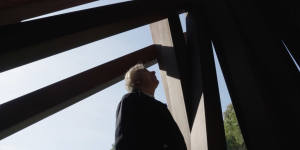I n 2014, Kevin McCoy minted Quantum, the first non-fungible token (NFT), heralding a decade of innovation in digital art that has reshaped traditional views on ownership, value and artistic expression. NFTs have earned a distinguished place within the art market, evidenced by their presence in some of the world’s most esteemed collections.

Since the inception of the first NFT, innovation within the space has surged. Pivotal developments, including the launch of the Ethereum blockchain solidified its status as the undisputed home of NFTs. Among these, “Cryptopunks” is a seminal project renowned for introducing the concept of digital avatars or PFPs (“profile pictures”) limited to 10,000 unique images. Motivated by these advancements, artist Eric “Snowfro” Calderon founded Art Blocks, a platform that empowers artists to create and deploy generative art through blockchain technology. As the landscape evolves, many museums and cultural institutions have begun recognizing its lasting significance and exhibiting digital artworks.
In this video, we commemorate this journey by speaking with digital art pioneers Kevin McCoy, Jennifer McCoy, Sarah Meyohas and Michael Bouhanna, Head of Digital Art & NFTs at Sotheby’s.
Why the History of NFTs & Digital Art Impacts Our Future through Creativity and Innovation
How ‘Quantum,’ the First NFT, Revolutionized Art Ownership
The universal query, “But is it art?” resonates deeply in Kevin McCoy’s exploration of digital technology within the art world. McCoy, who has always been at the forefront of media and digital innovation, leveraged his knowledge of Bitcoin and blockchain technology to cocreate Quantum with tech entrepreneur Anil Dash. McCoy says artists are increasingly focused on “the world of images, of distributed images on screens, [so much so that it] has become a focal point.” His choice of Quantum – a multicolored, pulsating octagon set on a black background, initially part of a longer video clip created by Jennifer McCoy – seemed almost destined. “It was providential… because it’s perfect as an opening. It has this mysterious quality, this beckoning quality.”

Since the late nineties, Jennifer McCoy has worked within the digital art scene, closely collaborating with Kevin McCoy. Her fascination with digital art grew after Kevin “stumbled upon” cryptocurrency, which opened up new avenues for artistic inspiration. Jennifer is fascinated by digital art’s ability to demystify the inner workings of the traditionally opaque art market. For instance, she is drawn to the concept of fractional ownership in digital-art projects, which deviates from the norms of conventional art collecting and allows for a more inclusive and community-oriented model of ownership. McCoy finds the fluid nature of digital ownership and its transformative effect on transactions endlessly compelling. “People really like knowing that they can have something, think about it, transfer it to someone else, buy another one. That kind of transparency is really interesting,” she says.
“Bitchcoin” Popularized NFTs As an Artistic Medium
Pioneering the intersection of art and blockchain, Sarah Meyohas’s “Bitchcoin” (launched in 2015) predated the NFT wave. This avant-garde project introduced blockchain not just as technology but as an artistic medium, probing notions of ownership, circulation and the intrinsic value of digital images – themes that are now common to digital art discourse.

With a foundation in photography, Meyohas was naturally drawn to blockchain as it represented a dynamic exchange of images. Her work draws a parallel between the traditional valuation between gold and art. “Gold itself is very related to art,” she says. “Gold has always existed in this feedback loop between cultural, spiritual value, and financial value.”
A crucial component of “Bitchcoin” was its backing by Meyohas’s photographic works. In her Cloud of Petals, Meyohas enlisted 16 men at the former Bell Labs to photograph 100,000 individual rose petals. Meyohas used the images to train an AI algorithm to create additional unique petals ad infinitum. The project established a tangible link between her digital and physical art practices – a method many artists now emulate. Her work continues to influence the trajectory of digital artworks and prompt a critical reexamination of how photography is collected and valued, challenging its historically lower market value than other forms such as paintings.
The Future of Digital Art
As Michael Bouhanna reflects on a transformative decade of digital art and NFTs, he believes we’re stepping into a new era. “It’s fascinating to see that [digital art and blockchain technology] have now definitely passed the test of time,” says Bouhanna. Blockchain technology has changed contemporary art, providing artists with new mediums to explore and drawing in collectors eager for digital works. With such a solid foundation, the enduring presence of digital art signals a bright future for digital art in the years to come.














